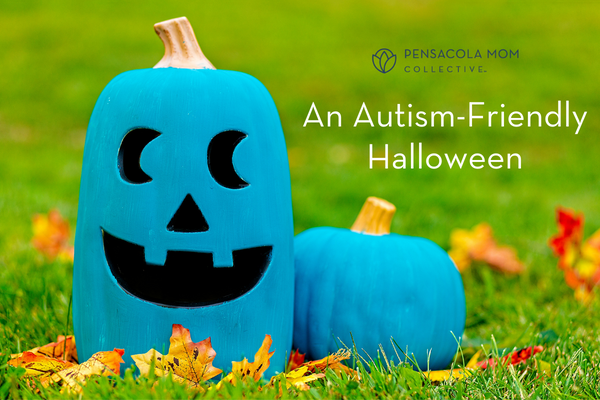
As soon as Halloween decorations hit our local Target and Wal-Mart shelves, my son Matthew begins planning his costume. For years, I looked forward to this time indulging his quirky costume choices and decorating the house far earlier than necessary. However, now that Matthew is six feet tall and 17 years old, Halloween also evokes feelings of worry and apprehension.
You see, Matthew is on the autism spectrum—a somewhat invisible disability.
Over time, I learned some tips that may be useful for others to help their child with ASD (Autism Spectrum Disorder) enjoy the holiday. If you are not the caregiver or parent of a special needs child, hopefully my perspective helps you prepare to receive trick-or-treaters with special needs.
Halloween creates an environment ripe with opportunities for sensory overload: loud noises, change of routine, new foods, and scratchy costumes.
If you parent a child on the spectrum, you know them best and can plan a Halloween evening that fits their needs:
- Make a realistic plan based on your child and the level of support they require. Visit houses you know to be safe and welcoming. Prepare your neighbors or friends for your visit.
- If they don’t like loud noises, find a way to work headphones into their costume or let them wear them anyway.
- Prepare them for the change of evening schedule with a social story or written plan. Explain how dinner or bedtime falls later this particular night.
- Teach them to politely accept the treats offered to them. Later, they can trade the non-preferred ones for a desired item you pre-purchased for the occasion, like a movie, book, or small toy. You can encourage them to try new flavors or textures under the illusion of candy. If your child is non-verbal, allow them to bring a sign or iPad with “trick or treat” to show whoever answers the door.
- Involve your loved one in selecting a costume. First, choose comfortable fabrics. Then, make sure they can see clearly. An uncomfortable costume can derail the evening before it even begins. Some families choose to add a blue pumpkin as a nod to their trick-or-treater’s ASD. However, not all houses recognize this symbol and react accordingly. You can help spread the word.
- Create Halloween traditions that suit your child. Do not let your preconceived notions about Halloween dictate theirs. Start slowly, and allow them to watch trick or treaters from the window or an adjacent room. Then, let them hand out candy in a costume if they initially fear trick or treating. Finally, when they request to participate, set a reasonable goal of one house or five houses and let them set the pace. Ultimately, find the happy medium and know it doesn’t have to be Pinterest-worthy.
Halloween also provides a teaching opportunity for inclusion for neuro-typical children and those of us welcoming autistic trick-or-treaters.
We can, and should, teach our neurotypical and able-bodied children to welcome and include those who are differently abled. Also, encourage them not to judge someone older dressed up in a “little kid” character costume. Or to question one with medical equipment that does not quite match the costume.
All of these individuals are superheroes in their own right for the challenges they face and overcome daily.
We can provide a home that welcomes the trick or treaters of all ages, shapes, and sizes. Stock the treat buckets with a candy alternative, like stickers, small toys, or erasers. Then, offer a treat and a smile to the child, or teenager, who cannot request the candy or say thank you upon receiving it. Follow up the candy with a knowing smile for the parent or caregiver accompanying the trick or treaters.














